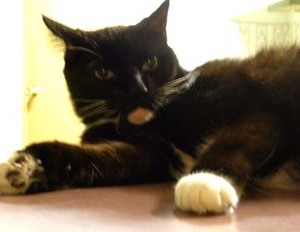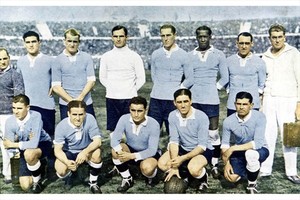What is Feline Urethral Obstruction?
Feline Urethral Obstruction falls under the larger category of feline lower urinary tract disease (FLUTD). These diseases are common in cats and include diseases of the bladder and the urethra. Urethral obstruction is when the urethra becomes blocked and the cat cannot pass any urine. It is more common in male cats because the male’s urethra is longer and thinner than the female’s and more likely to become blocked by urinary crystals, also called uroliths, or urethral plugs. Urethral obstruction is life-threatening and should be treated as an emergency.
What to Look for
I became acquainted with urethral obstruction through my cat Calvin. At first, I thought Calvin was constipated, which is a common error made by the pet owner. I noticed he kept going to the litter box and straining unproductively. I tried giving him some mineral oil, to help him pass a stool, but he was still straining in the litter box and frequently licking his penis. Soon he was straining all over the house, passing small amounts of urine.
I brought him to the vet, who diagnosed him with a bladder infection and prescribed amoxicillin. But Calvin was not getting better. He stopped eating and was not interested in any of his favorite treats. He was single-minded in straining to pee, sometimes accompanied with a cry. It was a holiday weekend and I called the vet’s message service to report the lack of progress. The vet called back suggesting that Calvin was not urinating because it was painful. By Sunday night, Calvin was in a ball in the corner of the bathroom. I called the vet again and they gave me the number of the on-call emergency vet. I described the situation and she told me to bring him to the Animal Hospital right away.
Treatment at the Local Animal Hospital
They had to insert a catheter in Calvin’s urethra to relieve the obstruction. He was placed on IV fluids for dehydration. In the next three days they tried to break up the crystals and restore bladder function with drugs, but Calvin was still unable to urinate. I went to visit him so he would not lose hope of coming home. The vet at the Animal Hospital told me that Calvin was not getting better. The only thing that relieved the obstruction was the catheter. She recommended that I take Calvin to Cornell University in Ithaca NY for perineal urethrostomy surgery.
Perineal Urethrostomy Surgical Procedure
It was about a three hour drive to the Cornell University Hospital for Companion Animals. Calvin had to travel with the catheter in to keep him unblocked. Perineal urethrostomy (PU) is an operation that removes the penis and reattaches the shortened urethra to a larger surgical opening, more similar to the female anatomy. The surgeon at Cornell explained that this will not stop the formation of crystals, but just provide a larger opening for them to pass.
Care after Surgery
There were many rules to obey when I brought Calvin home from the hospital. He had to wear an Elizabethan, or e-collar, to prevent him from licking and possibly pulling out the stitches. One of the vet interns told me that this operation was almost like micro-surgery and any slight disturbance could cause damage. They told me to look at the surgical site, but not to touch it or put anything on it.
He also had to be isolated from the other pets in the household. Not only was Calvin not allowed to lick his wound, but I couldn’t take a chance that one of the other cats or dogs would lick it either. I housed him in a room with French doors, so we could see him and he could see us.
I was advised not to use regular cat litter, but newspaper in his litter box instead. If a grain of the litter became attached to the wound area, it could prove detrimental to the surgery.
I was also instructed to feed him moist food only to help him maintain fluids. Although one of the surgeons said that the relation of diet to crystal formation was still theory and being studied, a staff member said if I wanted to play it safe, I should avoid fish (Calvin’s favorite!) and look for low magnesium content. He was also supposed to drink plenty of water. While I could see he was eating his canned food, it was hard to tell how much he was drinking. As a precaution, I used an eye-dropper to give him water several times a day.
The isolation went on for four weeks. I bought an animal cage so that I could move Calvin to other rooms. This maintained his safety while allowing him to be with the rest of the family.
In spite of all the precautions, in six months, Calvin again was straining in the litter box. Cats that have had the perineal urethrostomy are prone to urinary tract infections and I thought maybe that was the problem. I brought him back to the vet and after several days of treatment, they advised me that they thought the surgical opening had narrowed with scar tissue, which is another possible side-effect of this surgery. We had to go back to the Animal Hospital for Companion Animals at Cornell University for a second surgery and return home for the tedious post-op session of isolation and the e-collar.
Conclusion
Although this was an ordeal for Calvin and for me, it was all worth it. Calvin survived the successful second surgery and is living a normal happy indoor-cat-life.
If you ever notice that your cat is having trouble urinating, you should bring your pet to a vet right away. Calvin was on his way to going into a coma, which would have ended in death had he not seen a vet that Sunday night to relieve the obstruction. Remember that you know your pet better than anyone else, so if something seems terribly wrong you should contact your vet immediately. It could save your cat’s life.






